| View previous topic :: View next topic |
| Author |
Message |
pandreas68

Joined: 24 Jan 2020
Posts: 96
|
 Posted: Sat Feb 01, 2020 8:40 am Post subject: Technical Camera: Mamiya Auto Bellows 645 Posted: Sat Feb 01, 2020 8:40 am Post subject: Technical Camera: Mamiya Auto Bellows 645 |
 |
|
pandreas68 wrote:
Hi,
I bought a Mamiya Auto Bellows 645 which allows to perform movements such as swing and tilt as seen here:
http://www.pentaconsix.com/viewcam.htm
I want to take it apart. Has anyone experience with that?
I also want to adapt it to Sony E-mount, with the camera being as close as possible at the bellows to allow for infinity. Has somebody already an existing solution? My basic idea would be to basically use a reverse ring.
Best regards
Andreas |
|
| Back to top |
|
 |
pandreas68

Joined: 24 Jan 2020
Posts: 96
|
 Posted: Tue Mar 17, 2020 6:25 pm Post subject: Posted: Tue Mar 17, 2020 6:25 pm Post subject: |
 |
|
pandreas68 wrote:
Hi,
Having been enspired by Mr. Pentacon Six usage of the Mamiya Bellows on Pentacon Six I thought it might be a good idea to adapt these bellows to the Sony Alpha 7 in order to obtain a low cost technical camera. Having seen and learnt a lot in the internet I thought it might make sense that I share it, even if now the interest isn't very high.
The first figure shows the adapter parts as stacked from the bellows to the camera side. 
It consists of a Cokin filter holder adapter (67mm), a female female 67mm adapter, a 67mm-49mm step down and a 49mm to nex reverse ring. Of course any other camera mount reverse ring could be used as well.
The second picture shows the parts stacked the other way round.

The third picture shows the adapter from camera side.

The fourth picture shows the adapter from bellows side.

The fifth and sixth picture shows the adapter when mounted to the Mamiya bellows.


The seventh picture shows the Bellows with camera and Biometar 80/2.8. Of course Mamiya lenses can be mounted as well. The P6 lens is mounted by means of a standard Mamiya to P6 adapter available at ebay.com from Chinese sources.
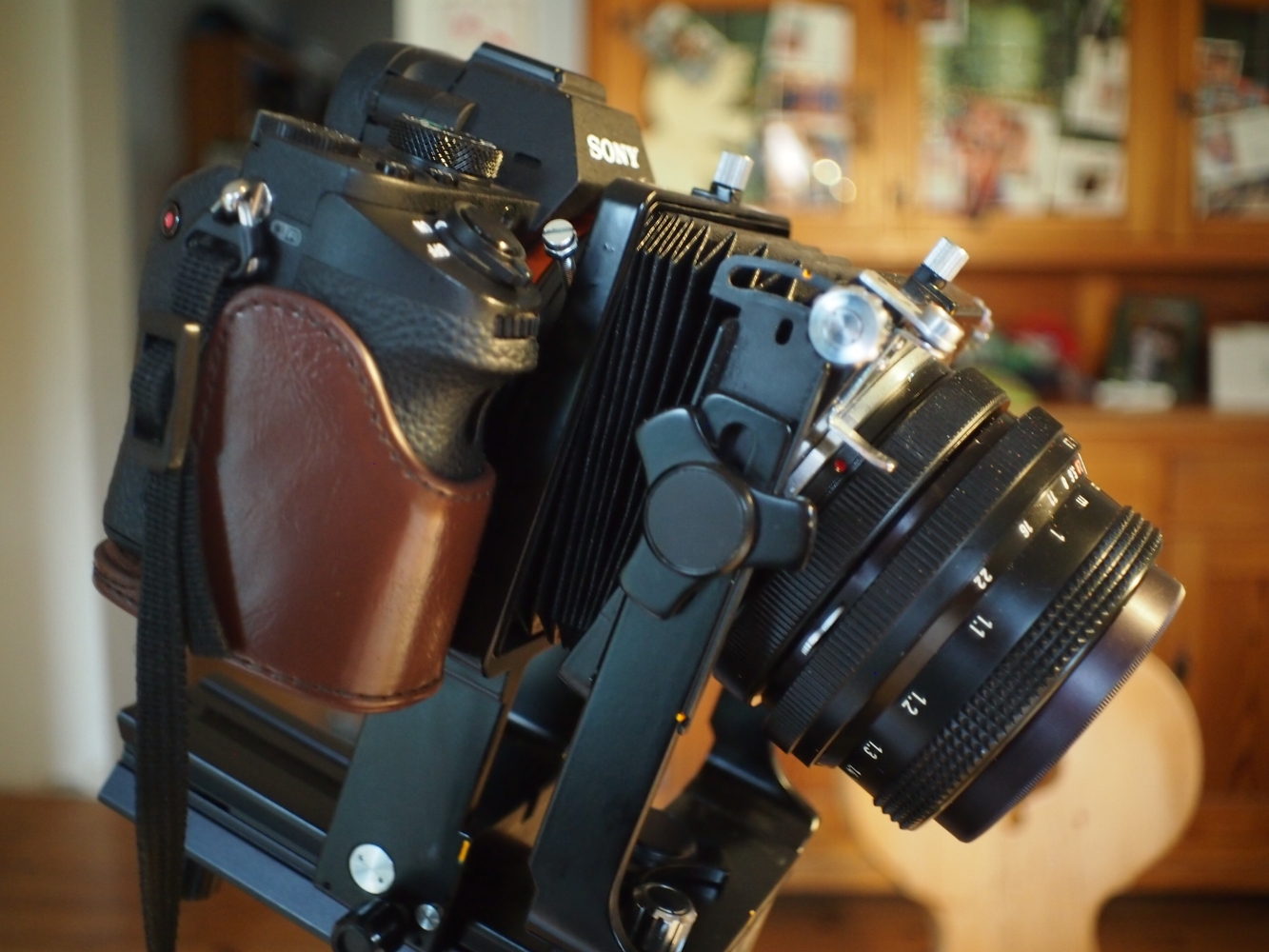
The eight picture shows the picture shot with the camera tilt setting shown before.

The nineth picture is done by swing. In front of the tea pot there is a green glass with the biometars lens cap on its top. It just adds some greenish and a shadow to the pot.
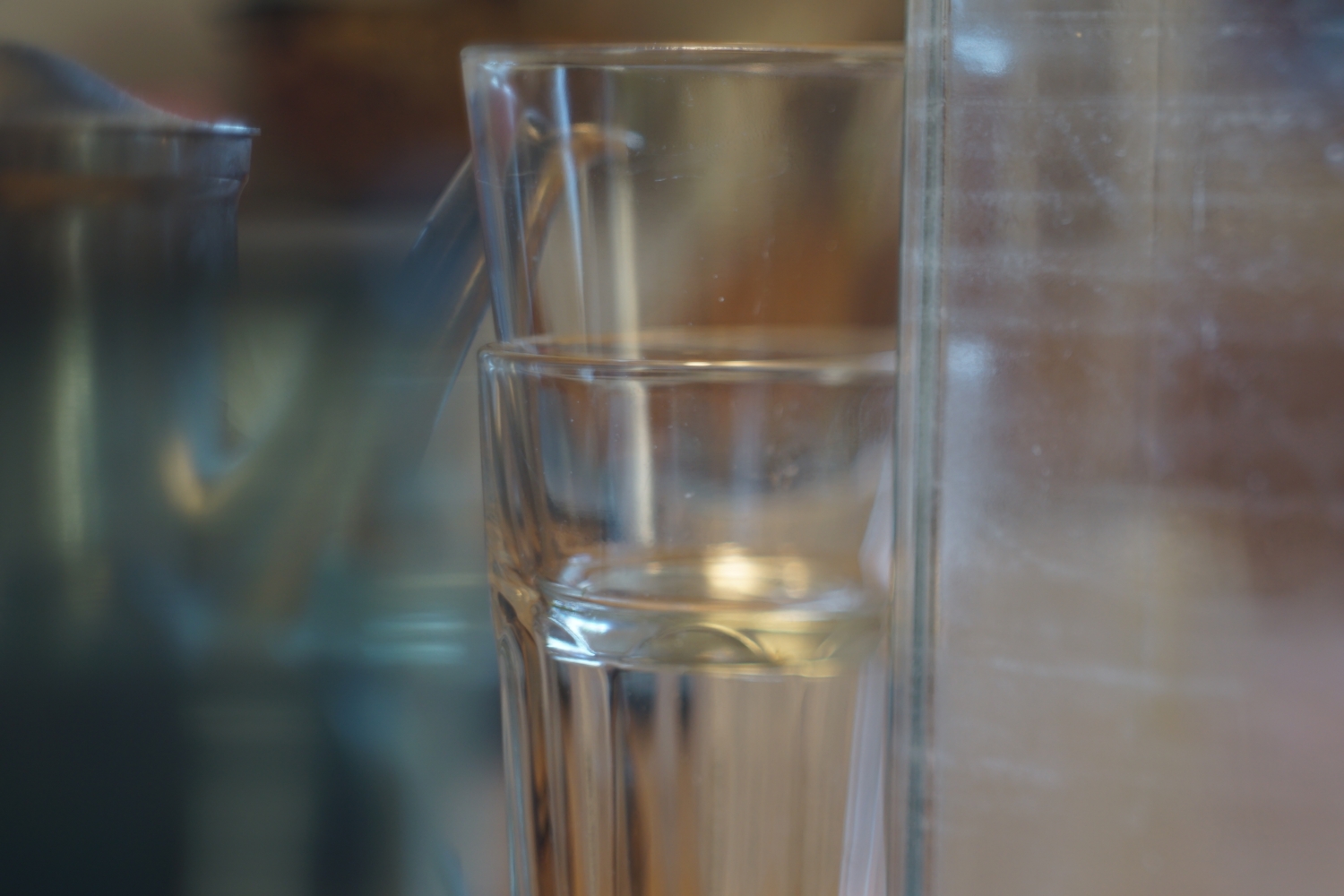
Last edited by pandreas68 on Tue Mar 17, 2020 7:14 pm; edited 3 times in total |
|
| Back to top |
|
 |
pandreas68

Joined: 24 Jan 2020
Posts: 96
|
 Posted: Tue Mar 17, 2020 6:34 pm Post subject: Posted: Tue Mar 17, 2020 6:34 pm Post subject: |
 |
|
pandreas68 wrote:
Next I want to write some words about making the adapter. The adapter consists only of these four stacked parts (bought from Chinese sources at ebay) and the screw. I filed down the female-female adapter as much as possible to obtain as much free bellows for movements as possible. This I did by a simple file and by sand paper (120, 240) and a sliding caliper. I also filed a little chamfer into the Cokin adapter which is visible at the second picture as a bright stripe around the Cokin adapter ring. Idea was to glue the Cokin adapter with the female-female adapter and the step down, while not glueing the reverse ring in order to be open for different camera mounts. Do to a mistake the parts are currently so strong together that I did'nt need to glue most of them. The only special tool I needed to borrow from my neighbor was a M3 screw tap. Last but not least the end of the screw is slightly rounded by a file in order to not demage the bellows.
Last edited by pandreas68 on Tue Mar 17, 2020 6:59 pm; edited 1 time in total |
|
| Back to top |
|
 |
pandreas68

Joined: 24 Jan 2020
Posts: 96
|
 Posted: Tue Mar 17, 2020 6:54 pm Post subject: Posted: Tue Mar 17, 2020 6:54 pm Post subject: |
 |
|
pandreas68 wrote:
This section is about features, limitations and costs. Camera can be mounted to the bellows in landscape and portrait. For mounting the adapter to the camera the screw needs to be removed due to the hand grip. Maybe it would have been better to place the screw some 90 degree further to come to the left side of the camera instead of using the place of the original Mamiya adapter. There are some 6mm or even a little more of bellows extension for infinity. With those 6mm it is feasible to do tilt and swing. Fall, rise and shift however is not possible with these 6mm. Therefor a kind of wide angle bellows would be needed. I am not sure whether there exists one directly made for this bellows, but I am quite confident that it is not too hard to create one with low effort.
For the bellows I payed some 100 Euro. With respect to the camera to bellows adapter the female-female ring was the most expensive part with some 8 Euro. The other rings were around 3 Euros each. So the camera to bellows adapter was below 20 Euro. The lens adapter P6 to Mamiya 645 was another 20Euro. Still money but for those having Mamiya or P6 lenses and a full format or a APS-C camera it might be a affordable entrance to a digital technical camera.
Low cost adapters for other lenses should be possible using a Mamiya camera cap and an intermediate ring of a certain lens mount type glued together. For APS-C full format lenses should be also fine. Maybe even for full format for longer bellows extensions. |
|
| Back to top |
|
 |
dan_


Joined: 05 Dec 2012
Posts: 1058
Location: Romania
Expire: 2016-12-19
|
 Posted: Tue Mar 17, 2020 10:10 pm Post subject: Posted: Tue Mar 17, 2020 10:10 pm Post subject: |
 |
|
dan_ wrote:
Kongrats, nice work!
I made such an adaptation with a Bronica tilt-shift bellows adapted to Pentax 645 cameras. With a Pentax 645-Sony E-mount adapter it could be used on FF Sony cameras, too.
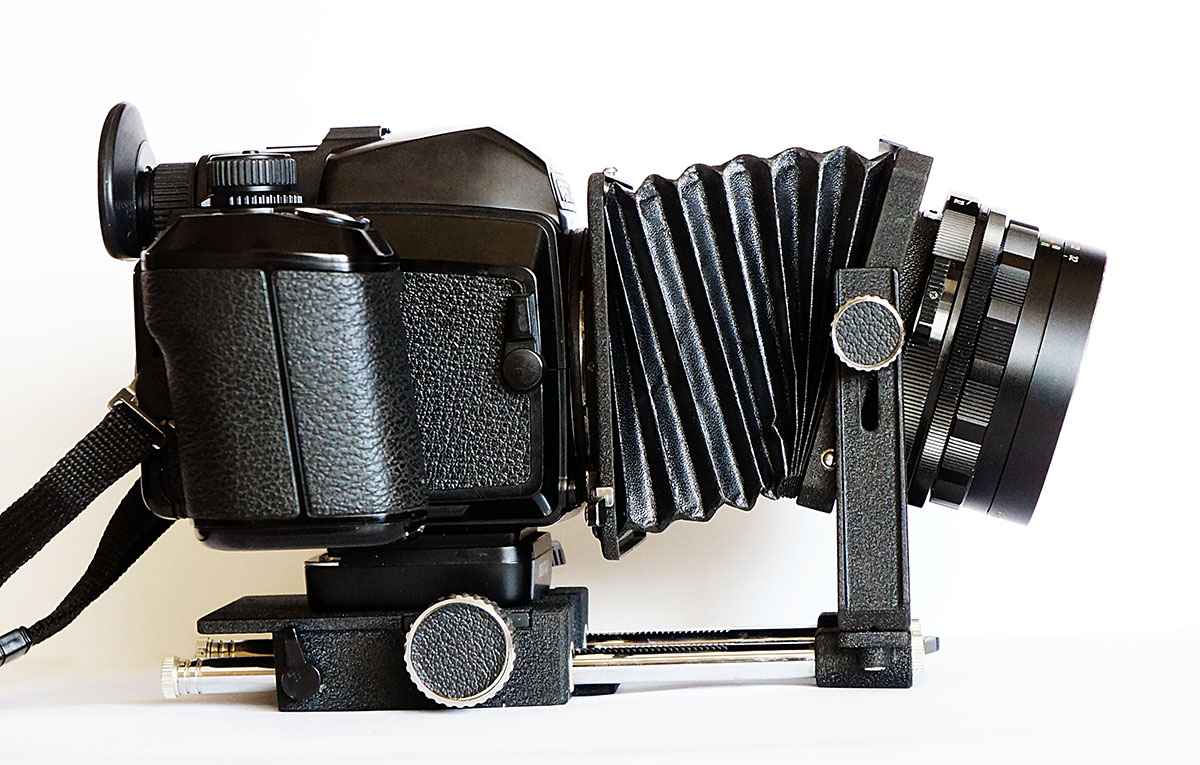
A very good lens to use with tilt/shift on FF is Mamyia 67 65mm - very sharp and permitting vast movement. The Pentax 645 35mm lens is very good in this regard, too, and it's wider. I also made a general m58 mm screw front adapter for older LF lenses.
 |
|
| Back to top |
|
 |
pandreas68

Joined: 24 Jan 2020
Posts: 96
|
 Posted: Thu Mar 19, 2020 8:51 pm Post subject: Posted: Thu Mar 19, 2020 8:51 pm Post subject: |
 |
|
pandreas68 wrote:
Hi Dan,
that looks also very good; the construction of the bellows looks simple but robust. Did you describe your adaptations somewhere? Would it also be possible to obtain infinity on ff system camera when using Mamiya or P6 lenses? Which movements are possible at infinity?
Best regards
Andreas |
|
| Back to top |
|
 |
pandreas68

Joined: 24 Jan 2020
Posts: 96
|
 Posted: Sun Mar 22, 2020 1:47 pm Post subject: Posted: Sun Mar 22, 2020 1:47 pm Post subject: |
 |
|
pandreas68 wrote:
Learning how to use swing and tilt...
I found a kind of tilt manual from Mr. Schoen.
Additionally I've learnt that if I want to set a certain plane of sharpness and I have preset an tilt respectively swing angle and focussed on a close point, and next I focus on a distant point in the plane, that if I need to reduce the bellows extension then the angle is too small, if I need to prolong the bellows extension then it is too large.
Example for finding the plane of a radiator

and the camera setting.
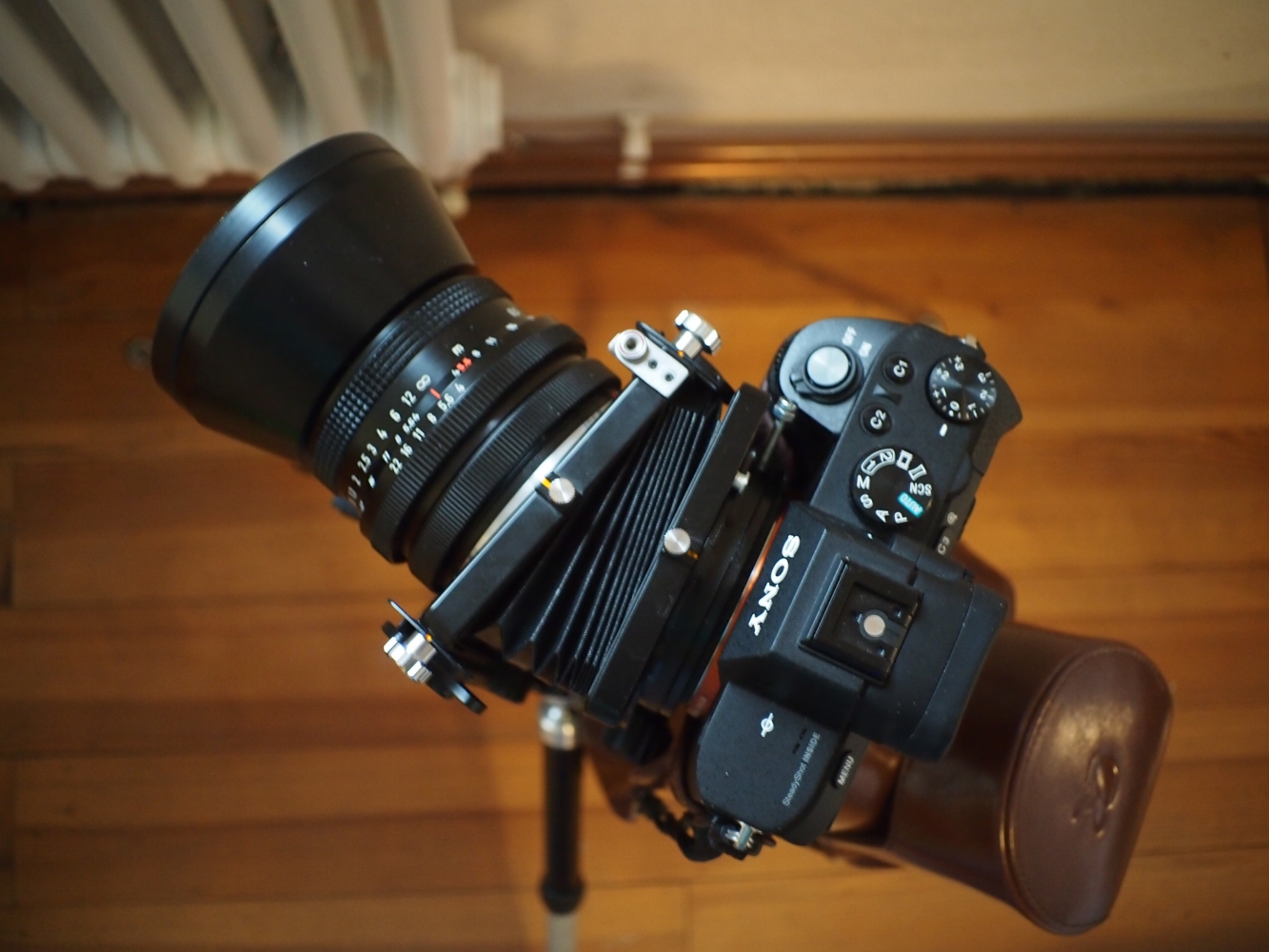
Example of finding a plane from the foreground (firepit) up to approx. middle of the childrens swing
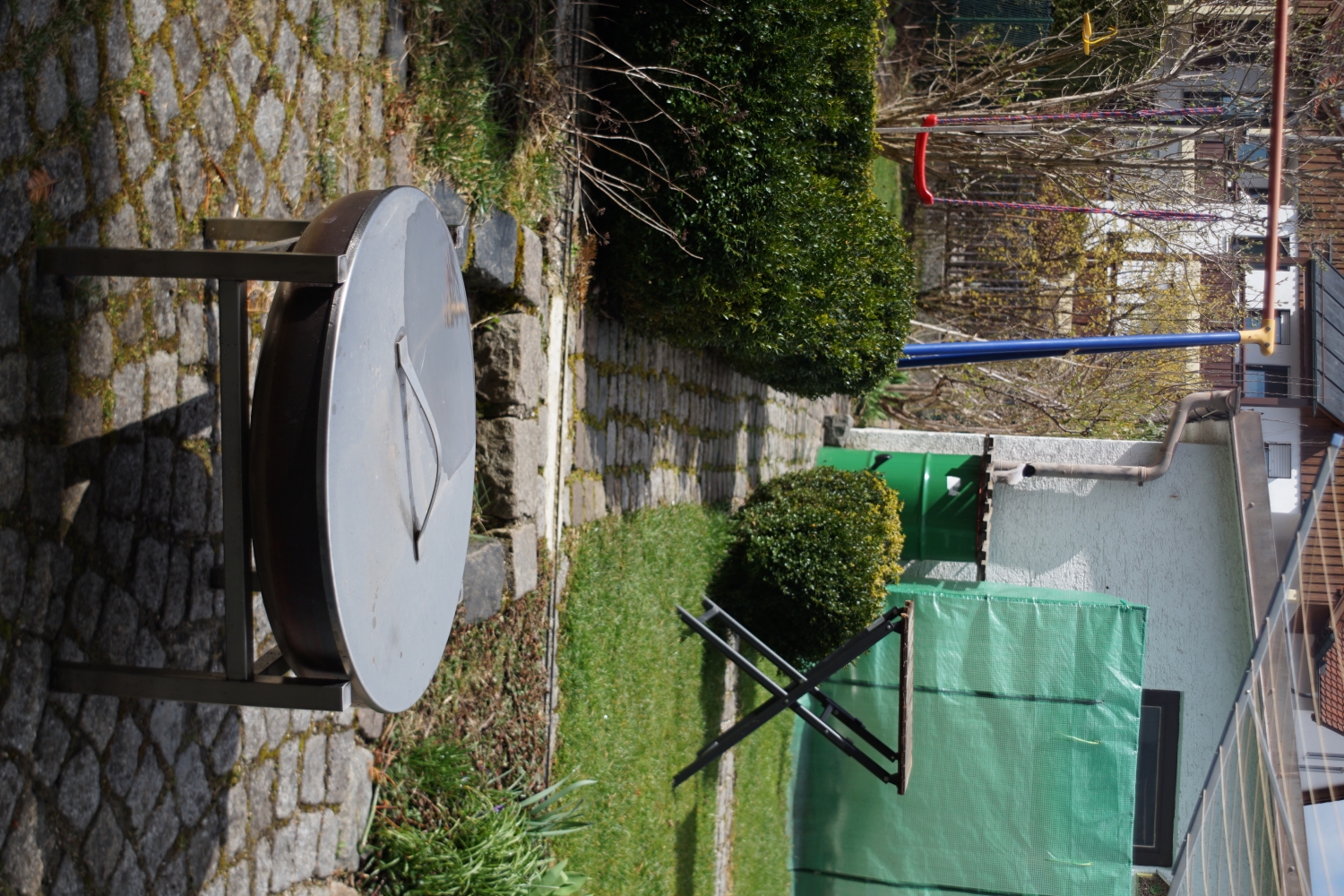
with the detail camera setting
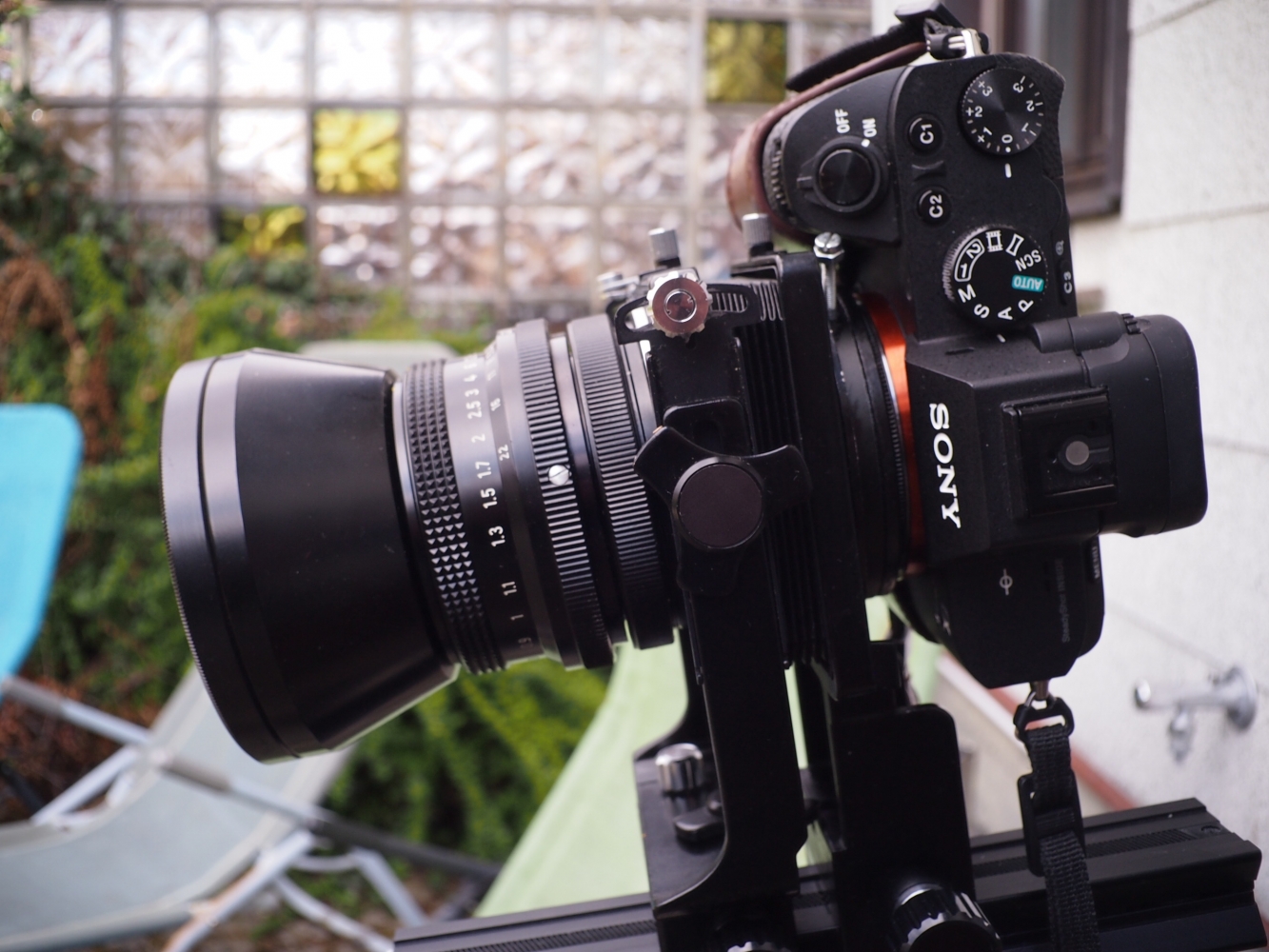
and a distant camera setting. Tilt was approx 2 degree.
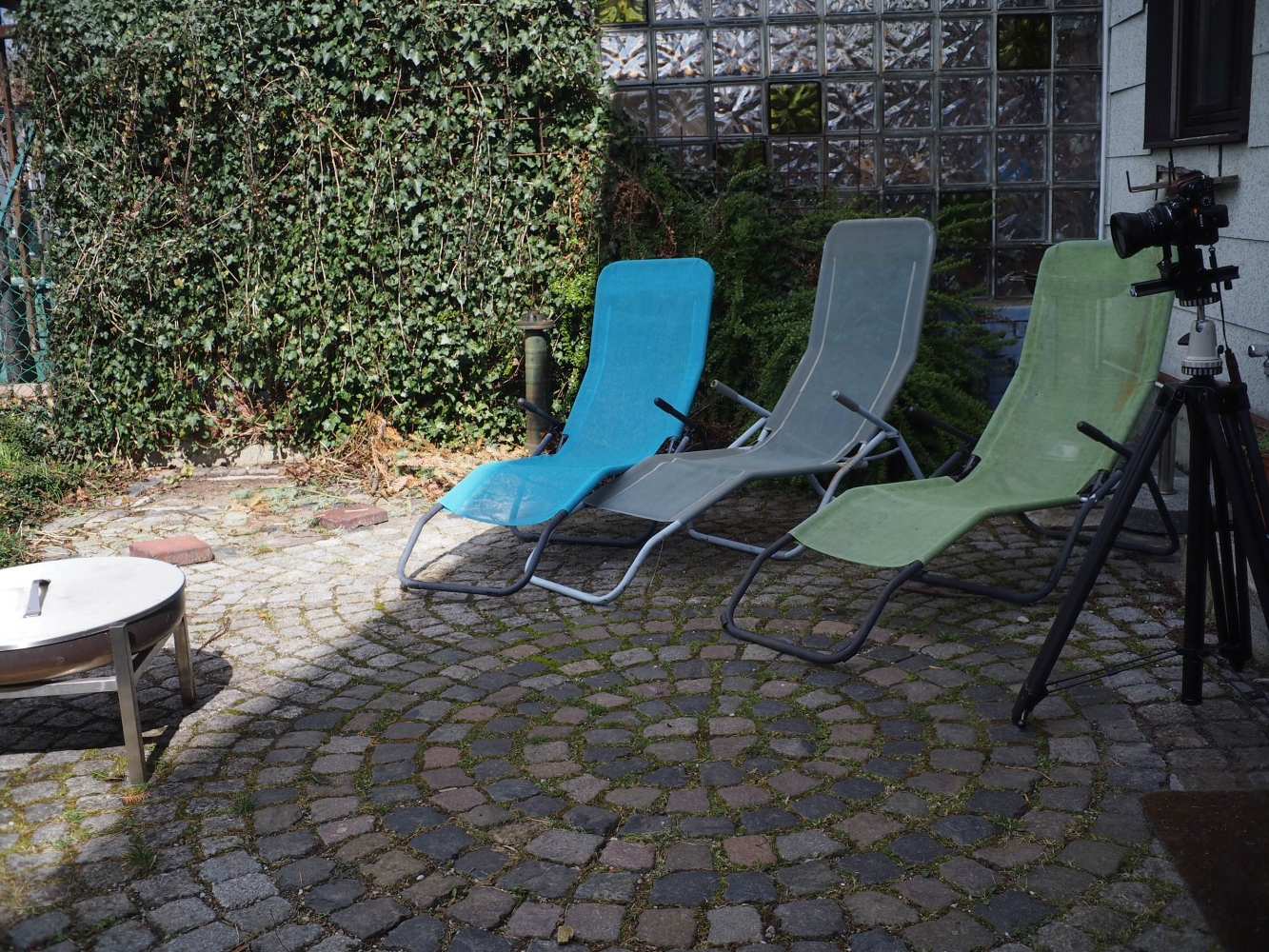
Example of a buxus sempervirens

with camera settings of approx 4 degree tilt.

The tilt needed in many examples is really very small. Do to the weight of the Flektogon it is not that easy to set the tilt precisely. Nevertheless for me it is quite a fun to use and to learn that stuff without the complicated large format groundglass stuff. |
|
| Back to top |
|
 |
dan_


Joined: 05 Dec 2012
Posts: 1058
Location: Romania
Expire: 2016-12-19
|
 Posted: Sun Mar 22, 2020 2:58 pm Post subject: Posted: Sun Mar 22, 2020 2:58 pm Post subject: |
 |
|
dan_ wrote:
| pandreas68 wrote: |
Hi Dan,
that looks also very good; the construction of the bellows looks simple but robust. Did you describe your adaptations somewhere? Would it also be possible to obtain infinity on ff system camera when using Mamiya or P6 lenses? Which movements are possible at infinity?
Best regards
Andreas |
No, I haven't described this adaptation and now it's too late as it is sold out. I obtained infinity with it with both Mamiya and Pentax 645 lenses (with a shortened Pentax 645/Sony E-mount adapter). Both allowed ample movements on FF.
The reason I sold it is that I came to the conclusion that tilts on a FF camera are of little utility for me. When using a wider lens I usually close the diaphragm at ~ f/8 and, in landscape and architecture photography, this brings enough DOF while still allowing the camera to be handheld, in most cases. I invested in HQ wide lenses instead.
However, shifts with wider lenses are really useful for me. I made a shift adapter myself and bought some shift bellows and adapters, as well.
Making these adaptations led me to the conclusion that the best tilt/shift device for a digital FF camera would need to have tilts on the back(camera) and shifts on the front(lens). This way tilts won't need lenses with larger covering circle - one can use even normal FF lenses for tilts-only images.
Making and using this tilt/shift adaptations it's a lot of fun and yours looks really well made and beautiful. I wish it to be very useful for you, too. |
|
| Back to top |
|
 |
pandreas68

Joined: 24 Jan 2020
Posts: 96
|
 Posted: Tue Mar 24, 2020 6:53 pm Post subject: Posted: Tue Mar 24, 2020 6:53 pm Post subject: |
 |
|
pandreas68 wrote:
Yes these Mamiya bellows do look good and are somehow good engineered allowing for dedicated setting of swing and shifts as well as tilt and rise/fall. A problem of them however is that they are not too rigid. I did not yet try the Sonnar 2,8/180 on it, but I expect it to be too heavy for it. Even with the Flektogon it is already a problem to do the settings in a precise way. So for me it is only an "entrance" to a technical camera which makes sense, if approprate lenses and digital camera are available yet and the bellows is seen at a reasonable price.
With the tilt in the back I totally agree. I would dream of the possibilities of e.g. a Linhof Technikardan with adapting a Sony Alpha II. But I guess even beside the price there is a problem: the handgrip of the Sony Alpha II is in the way; one would need a saw to modify the back standard or the Sony or it would be useable only for 150mm and onwards lenses. These kind of Linhof Technikardan style full format bellows, found as Spiratone Bellows, have some very bad comments. I found a lot of pictures from the bellows, but not those made by them. Best regards! |
|
| Back to top |
|
 |
dan_


Joined: 05 Dec 2012
Posts: 1058
Location: Romania
Expire: 2016-12-19
|
 Posted: Wed Mar 25, 2020 8:52 am Post subject: Posted: Wed Mar 25, 2020 8:52 am Post subject: |
 |
|
dan_ wrote:
I have a 6x9 Technikardan and a Sony RII and I've considered an adaptation but it's, indeed, hard to do it it because of the handgrip of the Sony. I won't risk to damage the Technikardan - I love this camera as it is.
What I'd really like would be to have geared movements for both tilts and shifts.
I think that a Plaubel Peco Junior 6X9 could be a better choice - it has geared movements and it's a lot cheaper. It should be adapted reversed, with camera on the front (Peco has only tilts on front and only shifts on back).
I have a Linhof Technika 70 with a faulty rangefinder, too, and I've considered transforming it in a tilt/shift adapter but, as I've mentioned before, I gave up. However, I made a shift adapter from the front standarde of an older 6x9 Voigtlander. It came out quite nice and it has geared shifts.
Another interesting option I've considered at some point was the old Kopil tilt/shift bellows - they are so small that, folded, you can keep them in your pocket. They have geared shifts both on front and back and tilts on front. |
|
| Back to top |
|
 |
pandreas68

Joined: 24 Jan 2020
Posts: 96
|
 Posted: Fri Apr 03, 2020 7:36 pm Post subject: Posted: Fri Apr 03, 2020 7:36 pm Post subject: |
 |
|
pandreas68 wrote:
Yes, these kind of Bergheil Voigtländers look quite suitable for adaptation. I also thought about this. Actually I never had one in my hand, but having a Nagel Vollenda from my grandfather which he used prewar and during war I know that I can never modify it risking to damage something of the original substance. I will study the Pecos. So far I never thougth about them due to their tin-like look, but maybe I would have less problems to change something at their structure if needed. Problem of all these solutions however is that the focal length is in the wrong range. So somehow an about 30mm lens with image circle of at least 50mm and good resolution while low distortions would be needed for architecture and sometimes landscape. Do you have hints for that? With the P6 50mm Flek I made today some pictures with movements around infinity which I put into a new thread. |
|
| Back to top |
|
 |
pandreas68

Joined: 24 Jan 2020
Posts: 96
|
 Posted: Sat Apr 04, 2020 7:07 am Post subject: Posted: Sat Apr 04, 2020 7:07 am Post subject: |
 |
|
pandreas68 wrote:
In another thread I described my creation of a bag bellows for usage with the Mamiya 645 Auto "technical camera". With this bag bellows it is possible to use shift/rise/fall at infinity. Here some pictures which I took in in the back yard. My main focus was on rise/fall/shift and not the correct exposure.
The first picture shows the camara position. Our backyard is some 6.7m broad and the distance of the right border is some 1.25 m. The tripod height was some 1.1 m only.

The next picture shows the result with no shift/rise/fall. There was some accidental tilt.
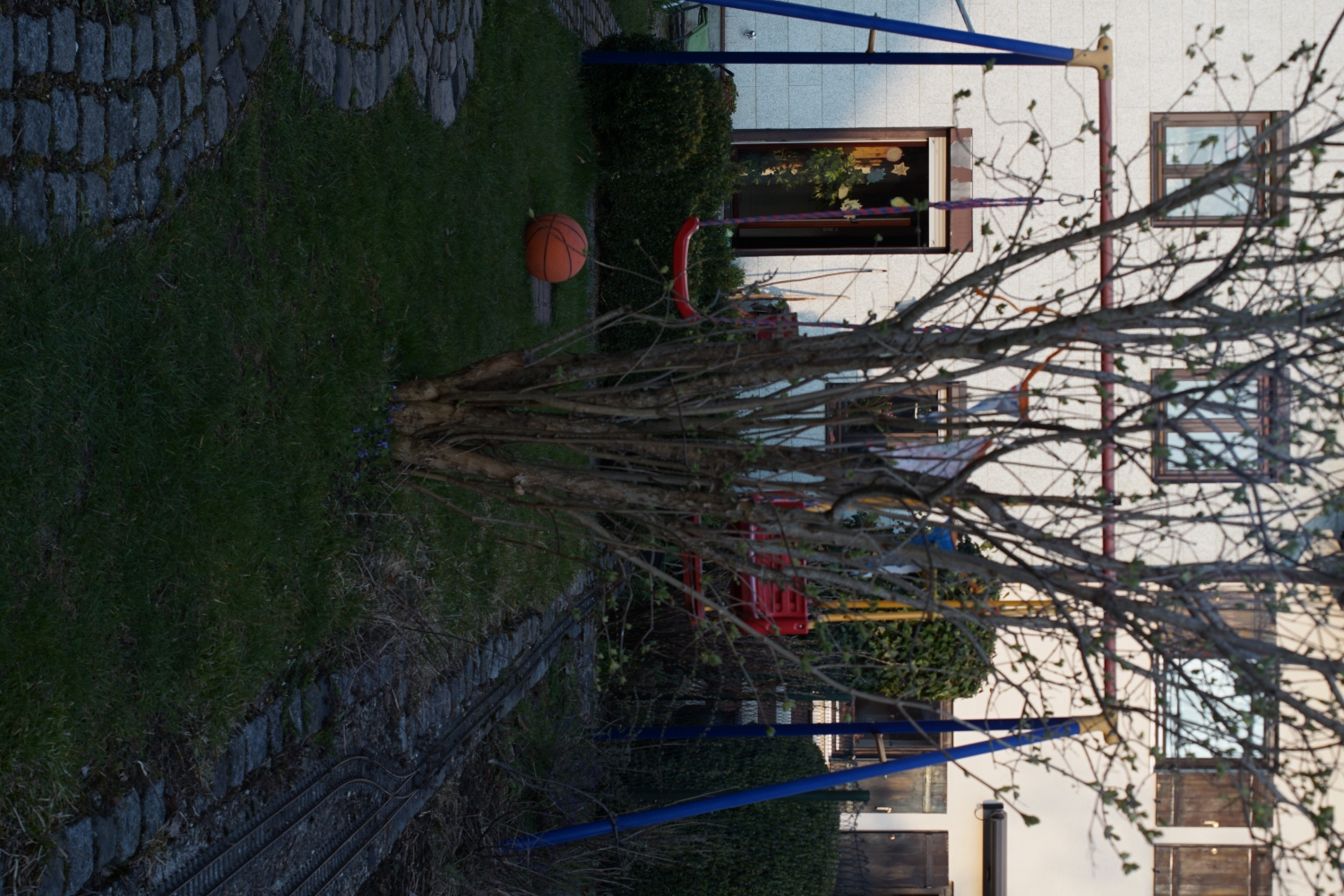
The following pictures show full rise,

full fall,

full shift right,

and full shift left.
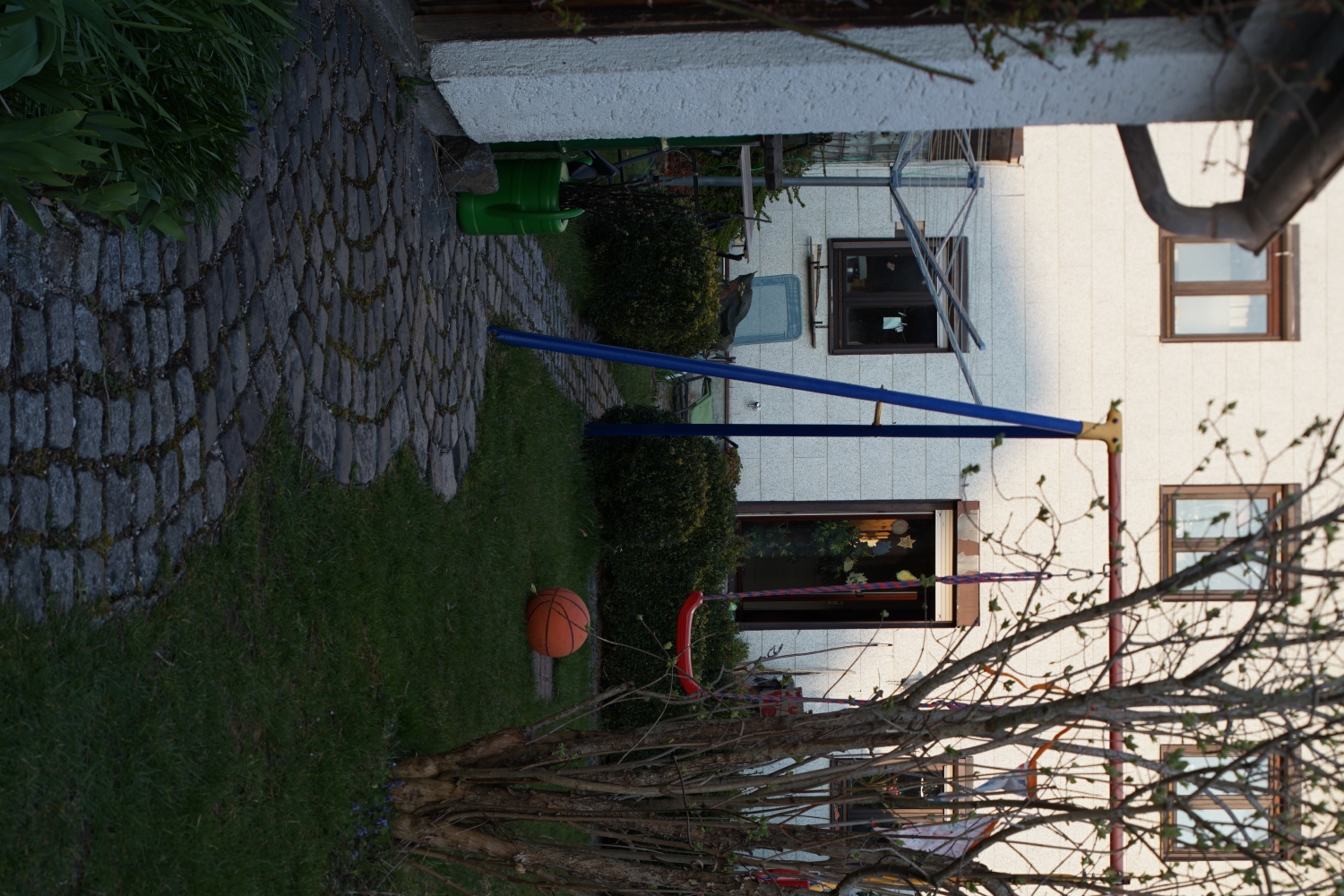
This picture shows now left shift and rise combined in order to bring our "half house" on the picture. This picture I definitely couldn't do without movements.
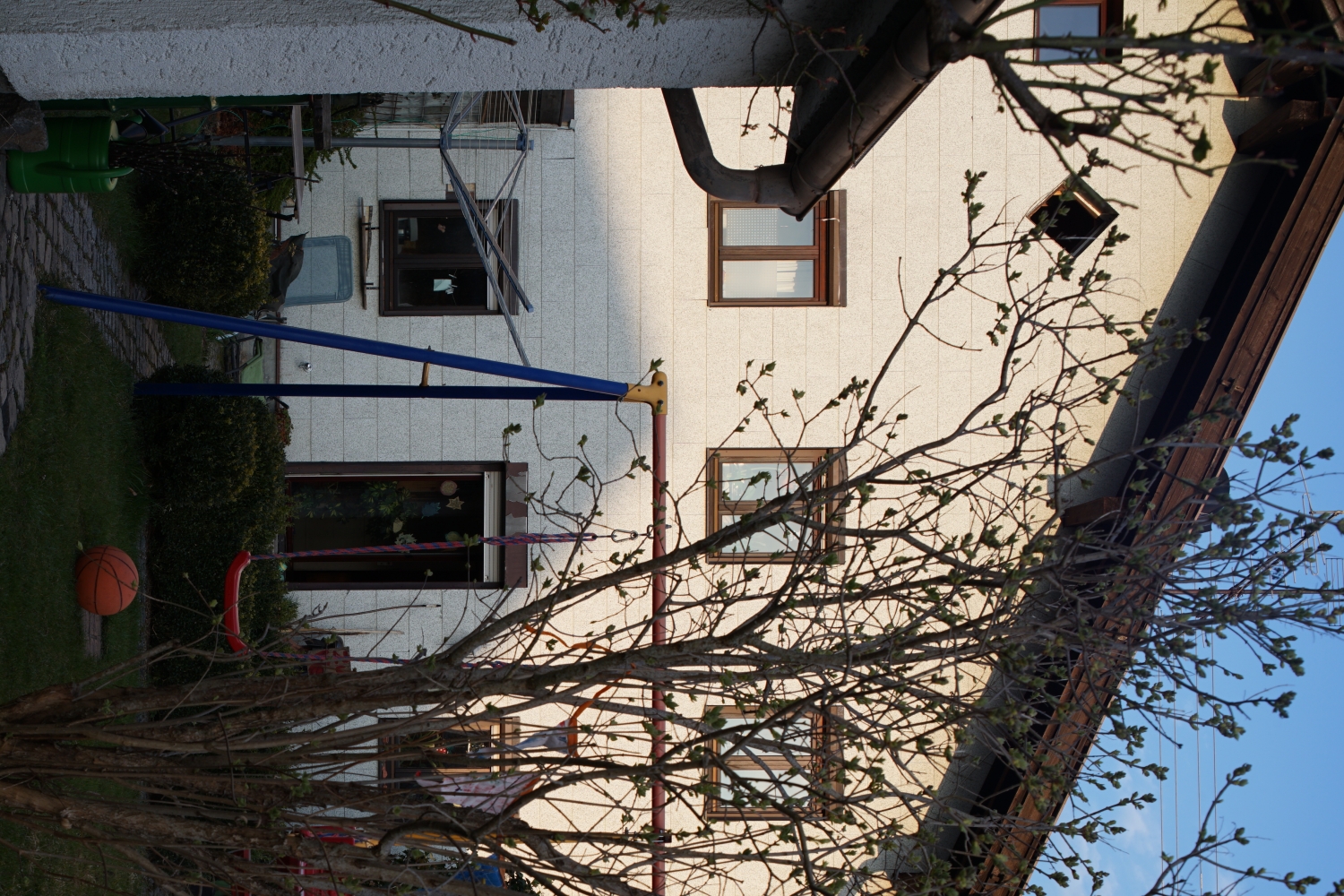
The last pictures show the camera setting from top
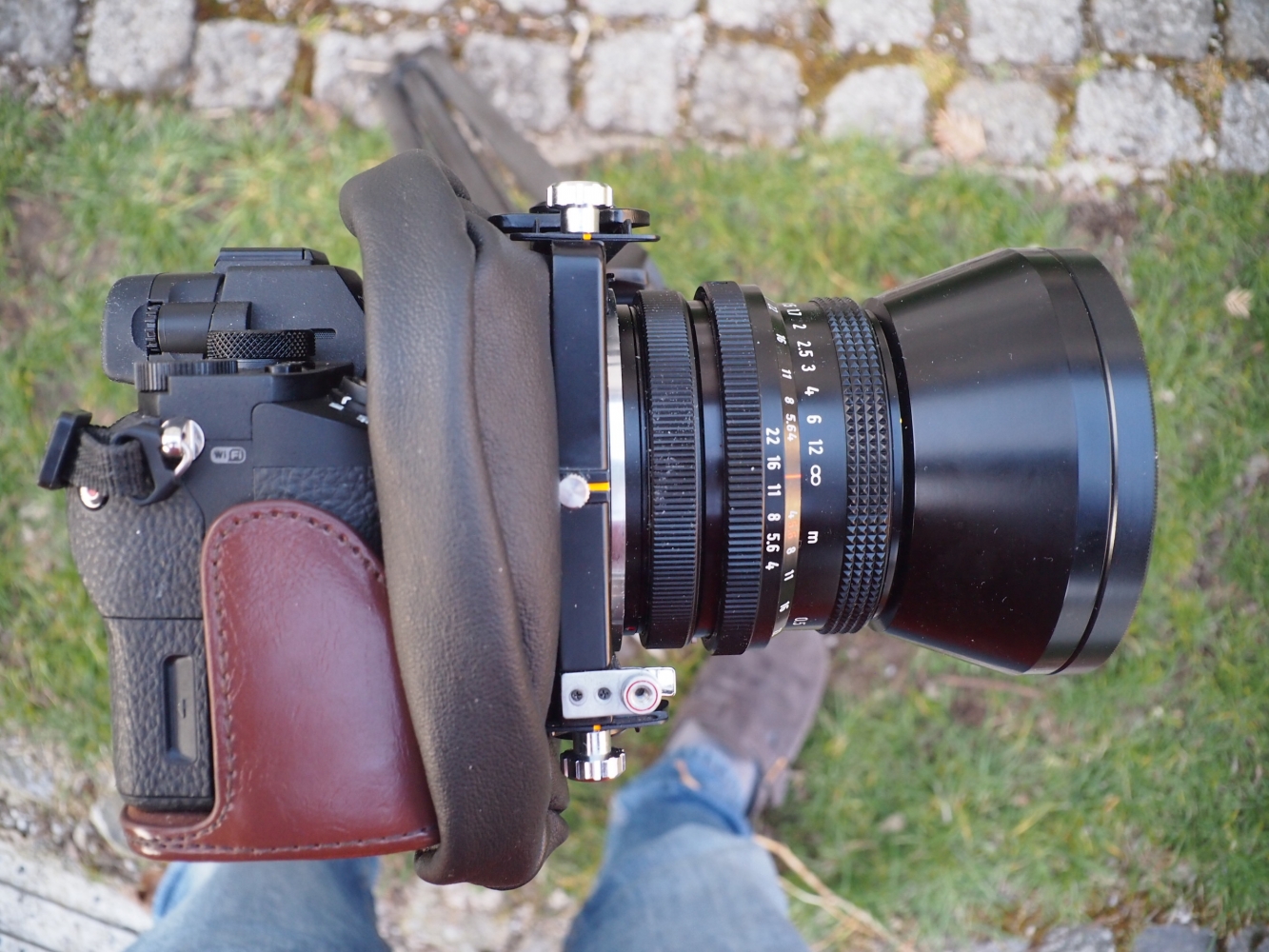
and from the side. There is a little negative tilt visible which I did by intention. The reason for this is that the Flektogons weight bends the fron standard slightly. In order to compansate the bending I've set a small negative tilt.
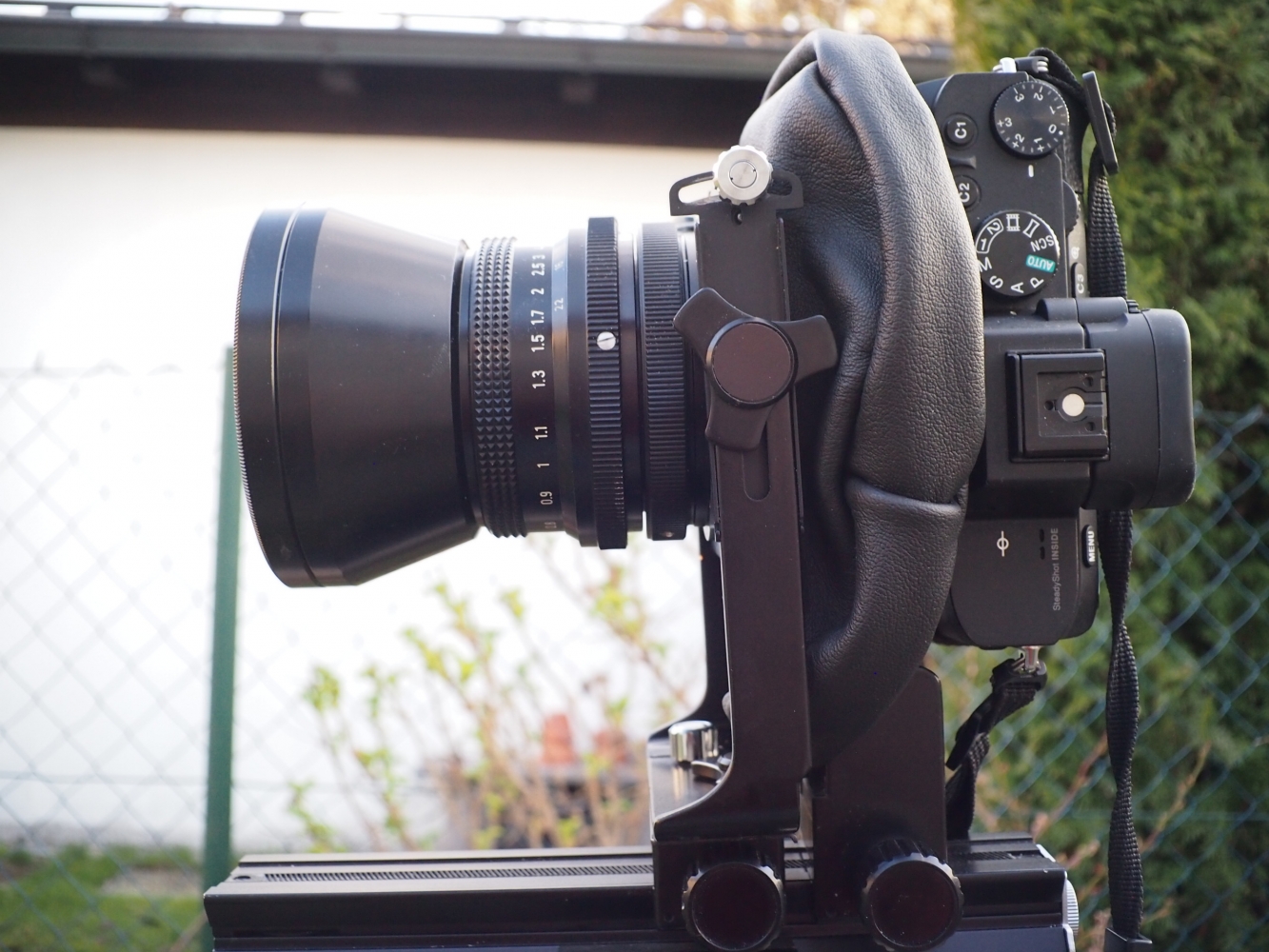 |
|
| Back to top |
|
 |
pandreas68

Joined: 24 Jan 2020
Posts: 96
|
 Posted: Sun Apr 05, 2020 2:36 pm Post subject: Posted: Sun Apr 05, 2020 2:36 pm Post subject: |
 |
|
pandreas68 wrote:
So far my widest lens for my "technical camera" was my 4/50 Flektogon of the Pentagon Six. On ff sensors it is actually not "wide" but delivers an image circle which seems to be big enough for all movements. An disadvantage of the lens is its weight which even slightly bends the fron standard.
I thought aboult alternatives. One might be to look for a 35mm Mamiya lens. This however has quite bad reviews. Anoter would be to look for a Pentax 645 35mm which however is quite difficult to obtain, not cheap and needed adaptation. Also the problem with the weight would be not really solved.
Another approach would be to use professional lenses such as recent Rodenstocks. These however are very expensive though quite easy adaptable.
Last approach is to look what is lying around at home and I found a Pentacon 3.5 / 30 Which fits into the Mamiya bayonet if the diaphragm lever is removed. So I did...
The first picture shows the parts. It is importent to let the spring screwed in. It can't get lost. Also the two brass parts I screwed in again that they are not lost.
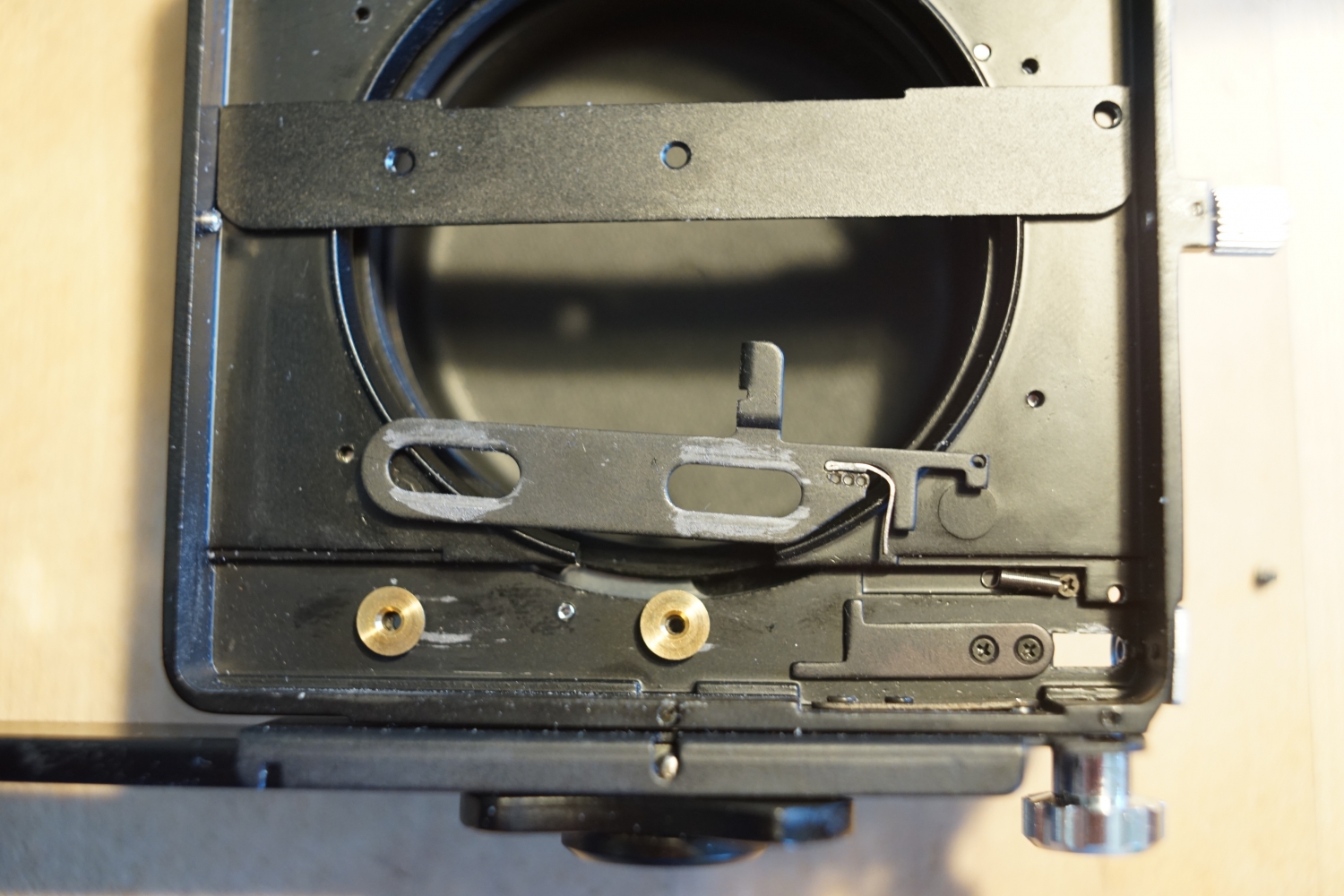
The only part I took out I've put into a matchbox and taped it to the original Mamiya camera adapter of the bellows.
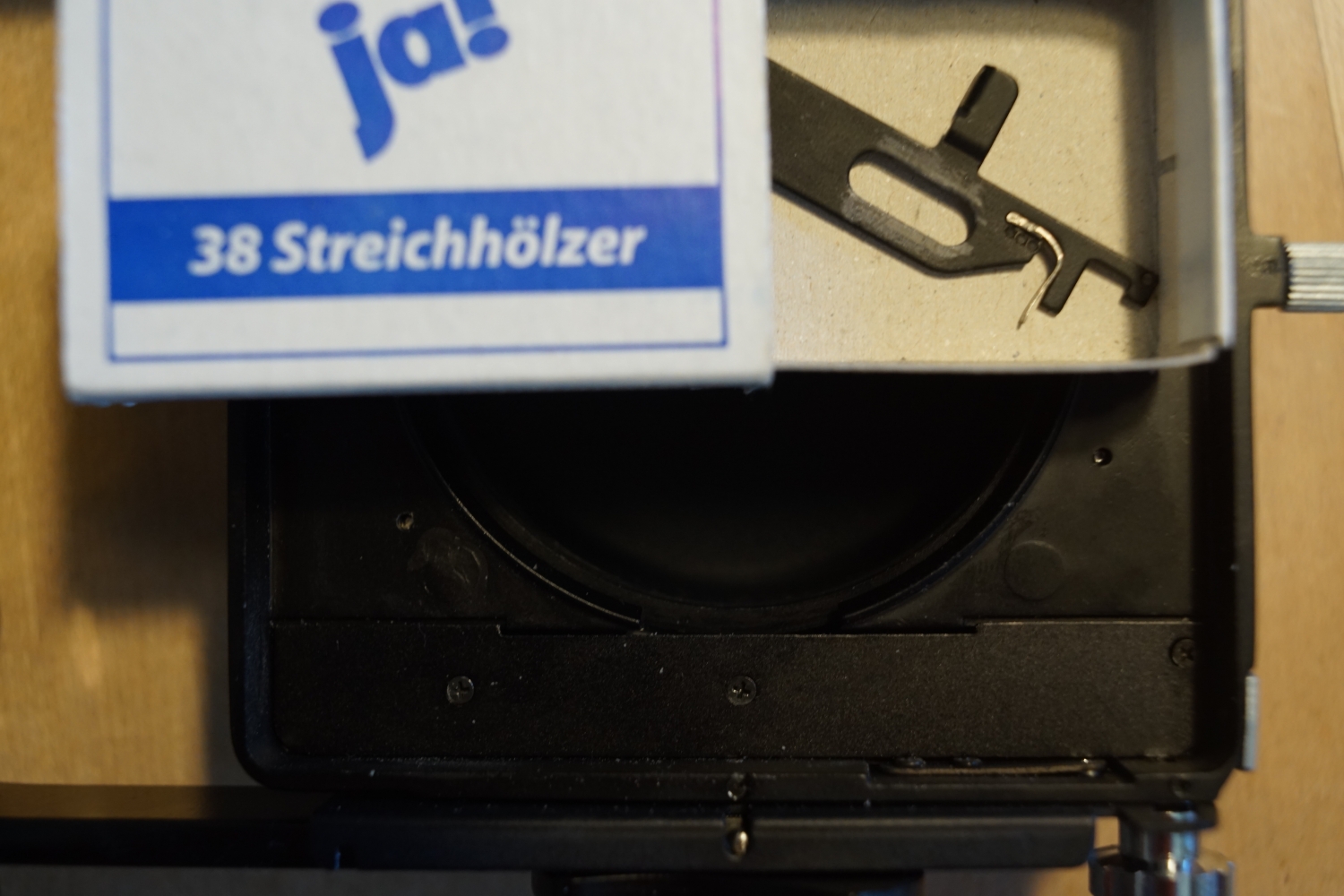
Now there is space for the Pentacon 3.5/30. I jammed it with some paper for my first trials. The same approch could be done with all other lenses which are thin enough to fit through the Mamiya bayonet. Infinity is reached at an bellows extension of more than 25mm. So the lens could be easily moved some 15 mm further to the front which would allow to easily operate its diaphrgm ring. In the shown position it is not so easy.

Here a picture without movement (At f/3.5) (at least without intended movements...)
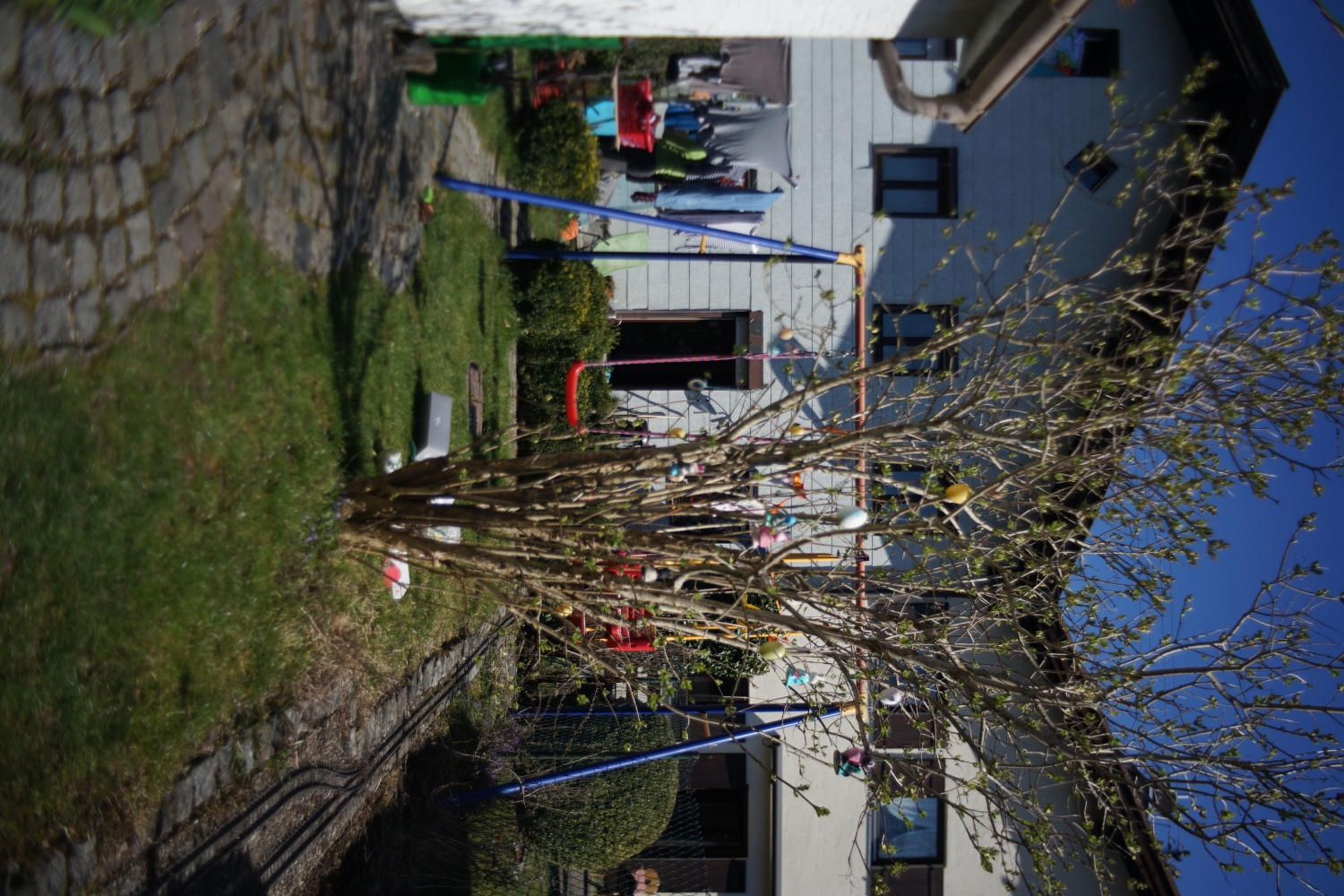
And here with half left shift and full rise. There is vignetting. Some few mm of movements may be possible without visible vignetting. So far I have not too much experience with GIMP, but maybe it is possible to reduce the vignetting there. Again at f/3.5.
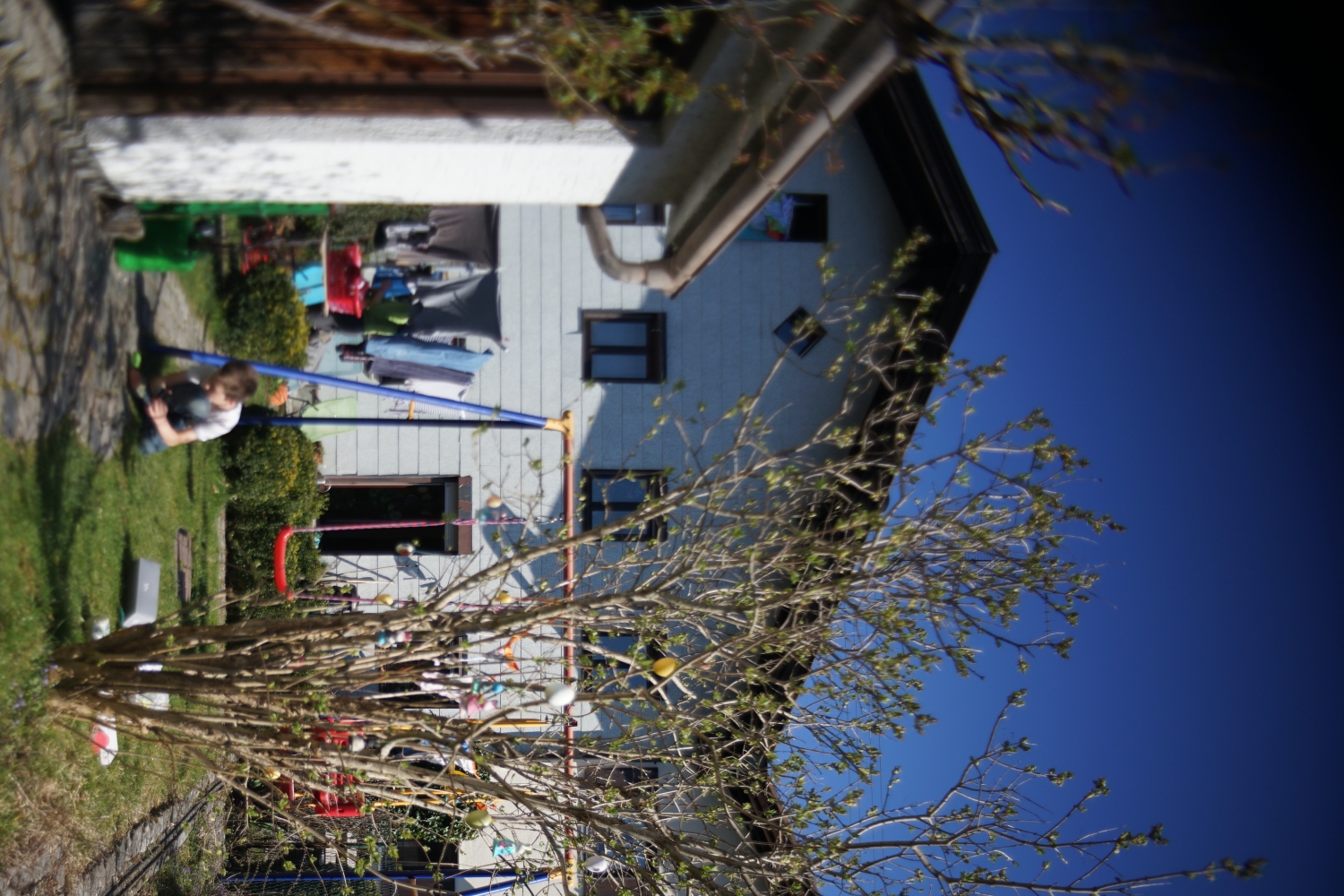
When using the lens in distances of less than 1m the image circle gets larger and more movement is possible. Therefor I will try the next days/months to find a solution to adapt it not just by paper.
I would be interested if somebody knew lenses especially with 35mm and less which are not too expensive, would fit into (not on!) the Mamiya bayonet and have an image circle of some 55mm and more. Also lenses with higher focal length would be interesting if fitting into the bayonet, since by balancing the weight movements are much easier to set.
This approach of putting lenses INTO the bellows rather then on might be also interesting for adapting projection lenses and enlargement lenses. |
|
| Back to top |
|
 |
dan_


Joined: 05 Dec 2012
Posts: 1058
Location: Romania
Expire: 2016-12-19
|
 Posted: Sun Apr 05, 2020 5:59 pm Post subject: Posted: Sun Apr 05, 2020 5:59 pm Post subject: |
 |
|
dan_ wrote:
There are very few 35mm lenses for (non-digital) medium format and I think that's what you'll really need for landscape and architecture photos. The only medium format 35mm lens I have direct experience with is the Pentax 645 one. It was made in 3 slightly different variants: A(auto), FA(auto focus) and D(digital). The cheaper of the 3 is the A variant - 300-400$ SH. I still have the A variant of this lens. When I sold my Pentax 645N I also sold all the FA lenses but I keeped the 35mm and 55mm A lenses with the intention of using them with a shift adapter. It has a 75mm image circle and it's very sharp. At f/5.6-F/11 it looks, on A7RII, as sharp as my Sony/Zeiss 35mm/f2.8 at the same apertures. I once read an extended comparison between medium format 35mm lenses (Zeiss, Mamiya and Pentax) and the Pentax 35mm lens proved to be the sharpest. |
|
| Back to top |
|
 |
pandreas68

Joined: 24 Jan 2020
Posts: 96
|
 Posted: Fri Apr 17, 2020 3:33 pm Post subject: Posted: Fri Apr 17, 2020 3:33 pm Post subject: |
 |
|
pandreas68 wrote:
Hi Dan, yes the 35mm Pentax indeed has a very good reputation. 300 bucks is however some money and I do not know how to adapt to the Mamiya bellows. I did not find adapters. The best solution for me was to change the mount of the Pentax lens into a P6 mount but this would require to turn the flange of the barrel some 6mm down in order ro install a 2mm plate with the P6 bayonet shape. I wonder whether the lens barrel of the Pentax 35 would allow for this. Did you ever take your Px 35 apart and have seen this? Best regards Andreas |
|
| Back to top |
|
 |
pandreas68

Joined: 24 Jan 2020
Posts: 96
|
 Posted: Fri Apr 17, 2020 3:56 pm Post subject: Posted: Fri Apr 17, 2020 3:56 pm Post subject: |
 |
|
pandreas68 wrote:
Hi,
this time I like to present the bellows with my second largest lens, the Sonnar 4/300. It ruled out that it is actually no absolute problem to use it with the bellows, if the lens is screwed on the tripod and the bellows is used without the focus slide. Actually these long focal lengths is my original motivation for movements since I believe that the rules of the movements are the same as in large format for the respective focal length while the picture impression is the impression of the focal length in full format.
The first picture shows how this combination generally looks like:
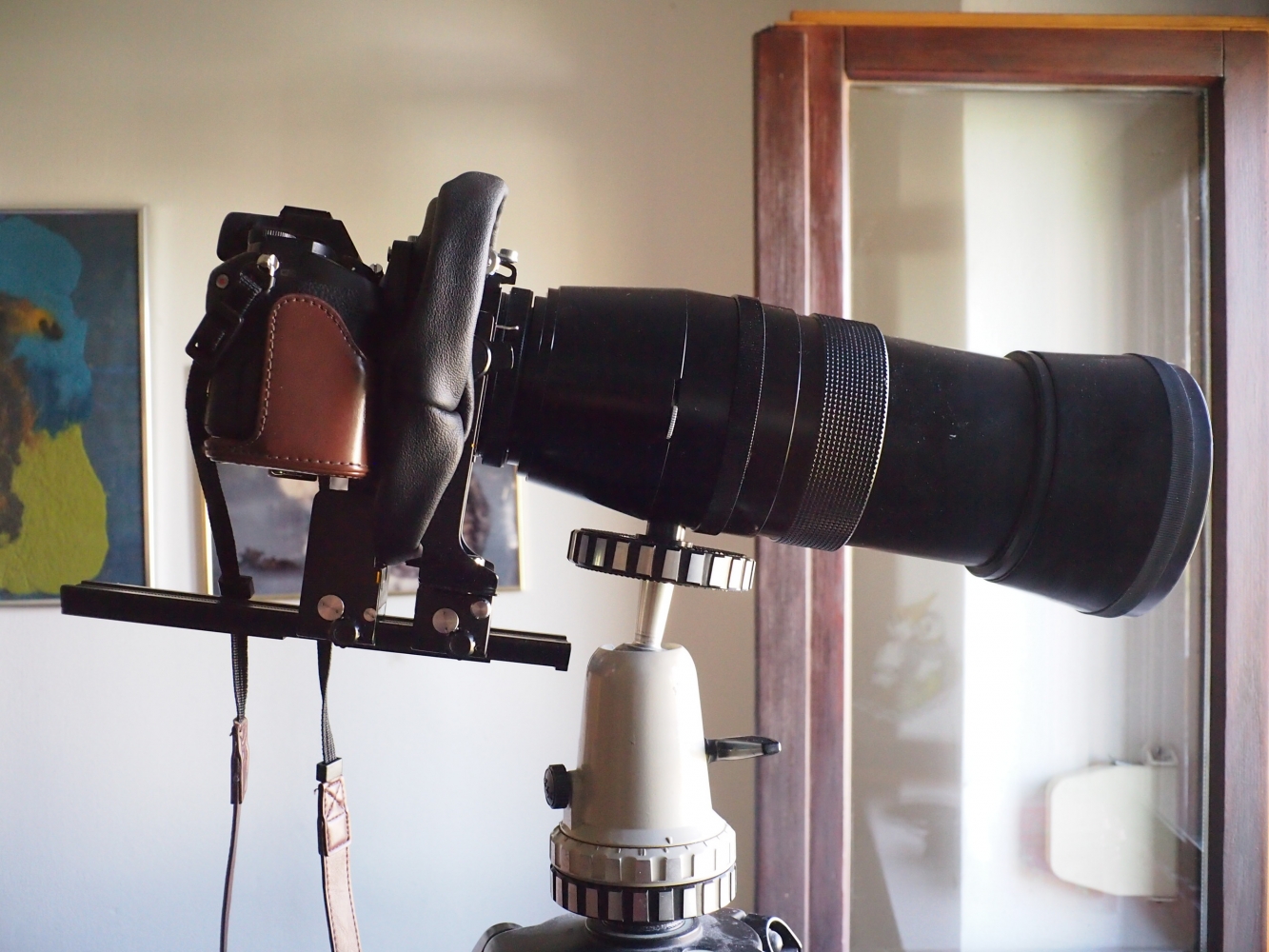
The second picture shows a picture taken with this setting. Mainly right shift was applied.
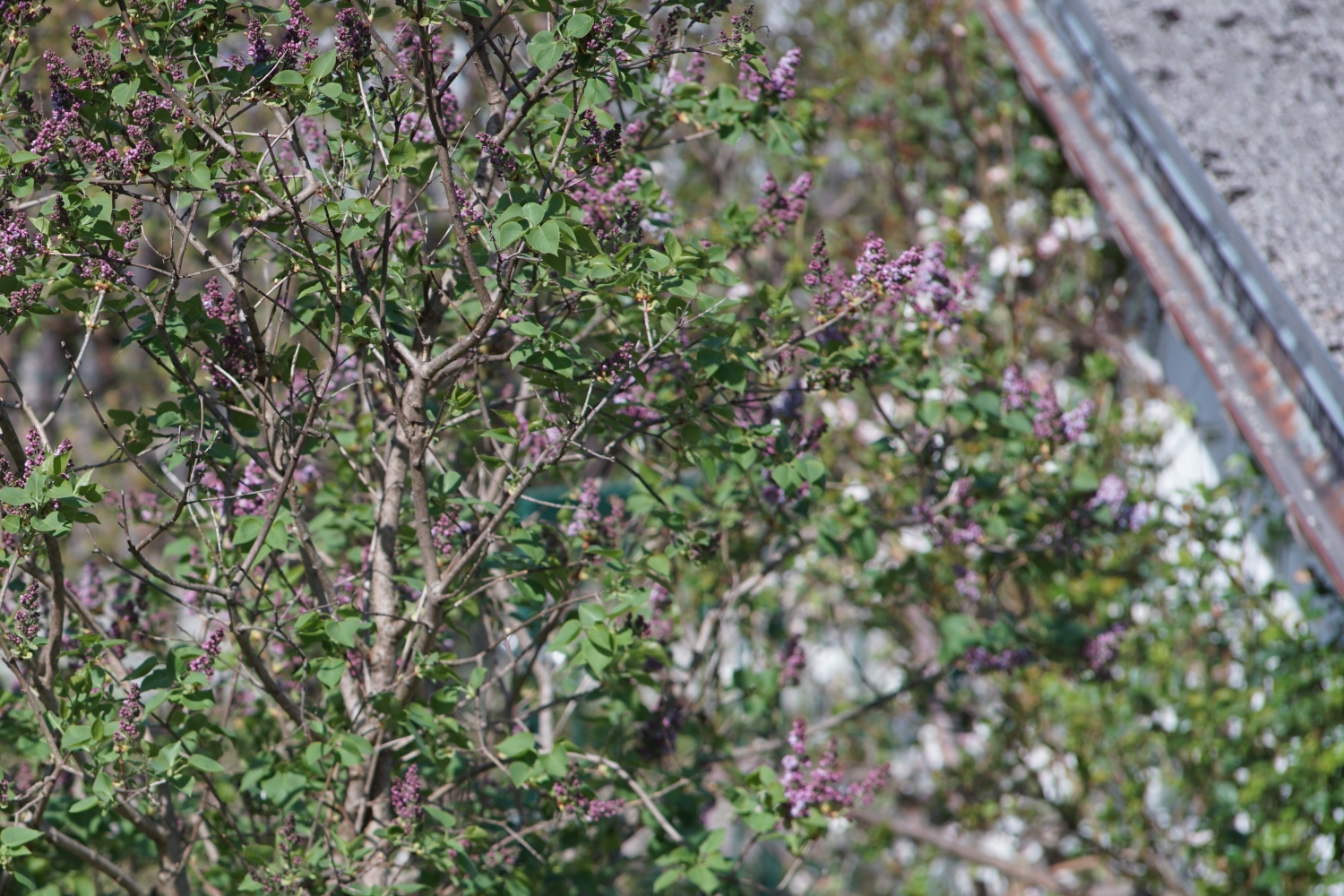
The third picture shows a trial to use swing at f/4.0:

I tried to lay the sharp plane parallel to the buildings wall with this kind of brown oriel. The plane however is not as steep into the rear as the wall. You may notice this with the large building in the back. The window visible inbetween the trees is the sharpest.
Alltogether I'd say that the bellows is useable to do such movements with the heavy lens. The thing actually moved is the bellows and the camera. Due to its non rigidness however and having no geared movements it is not very precise so that the settings take more time and that there is usually alway a little movement which is not intended due to bending of the bellows which needed to be avoided by using non zero setting though zero settings are wanted. I hope my words are clear enough... |
|
| Back to top |
|
 |
jamaeolus


Joined: 19 Mar 2014
Posts: 2971
Location: Eugene
Expire: 2015-08-20
|
 Posted: Sun Mar 05, 2023 8:53 pm Post subject: Posted: Sun Mar 05, 2023 8:53 pm Post subject: |
 |
|
jamaeolus wrote:
Hmm ...I must have missed this project while in progress. I found it while searching mamiya 645 bellows lenses. Which, it seems we're never made. I picked up a bellows a while back with the intention of doing a technical camera. I haven't got around to that yet but you are inspiring me. Well done! Still looking for a great macro lens for this fantastic bellows system.
_________________
photos are moments frozen in time |
|
| Back to top |
|
 |
|
|
|
You cannot post new topics in this forum
You cannot reply to topics in this forum
You cannot edit your posts in this forum
You cannot delete your posts in this forum
You cannot vote in polls in this forum
|
